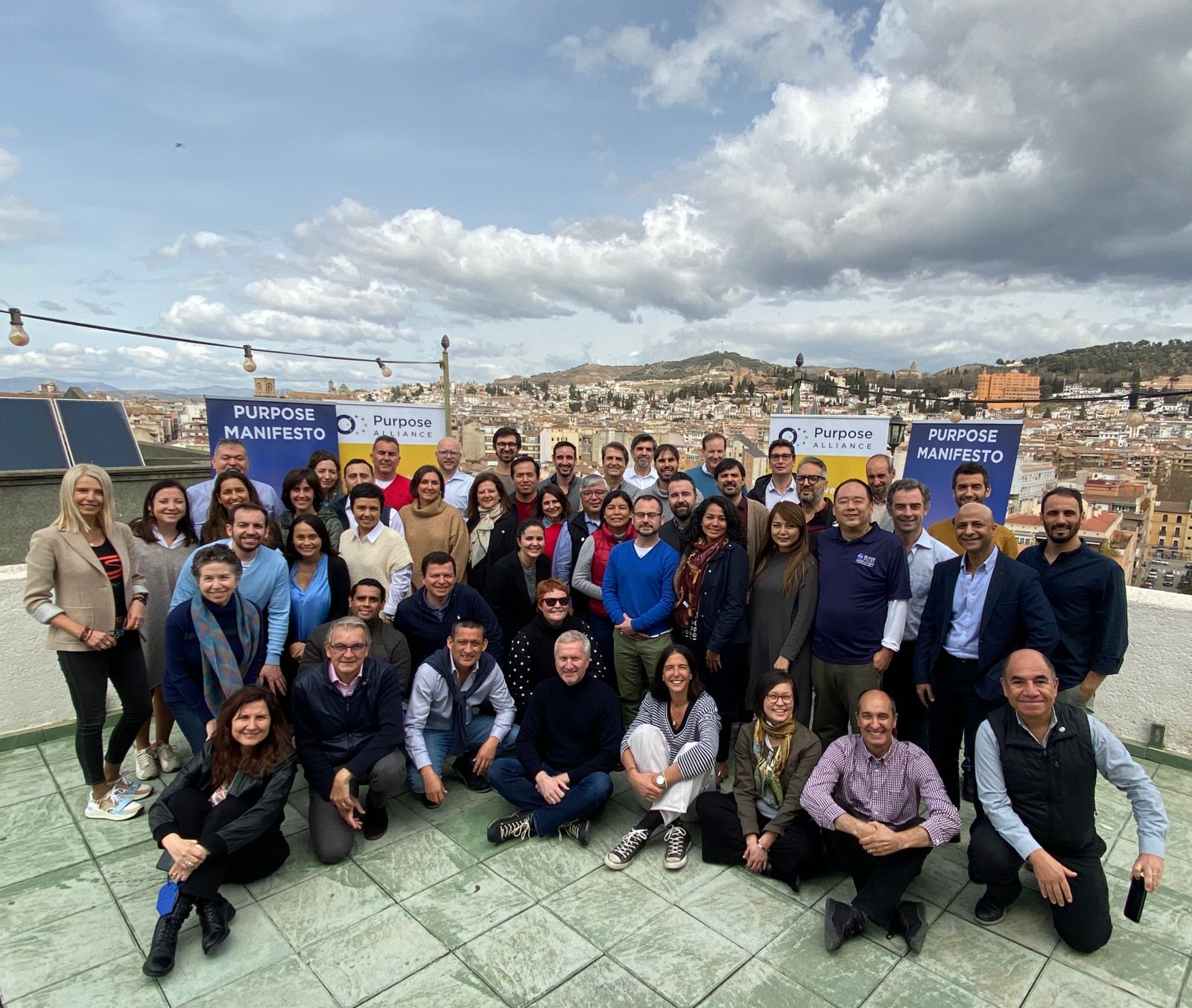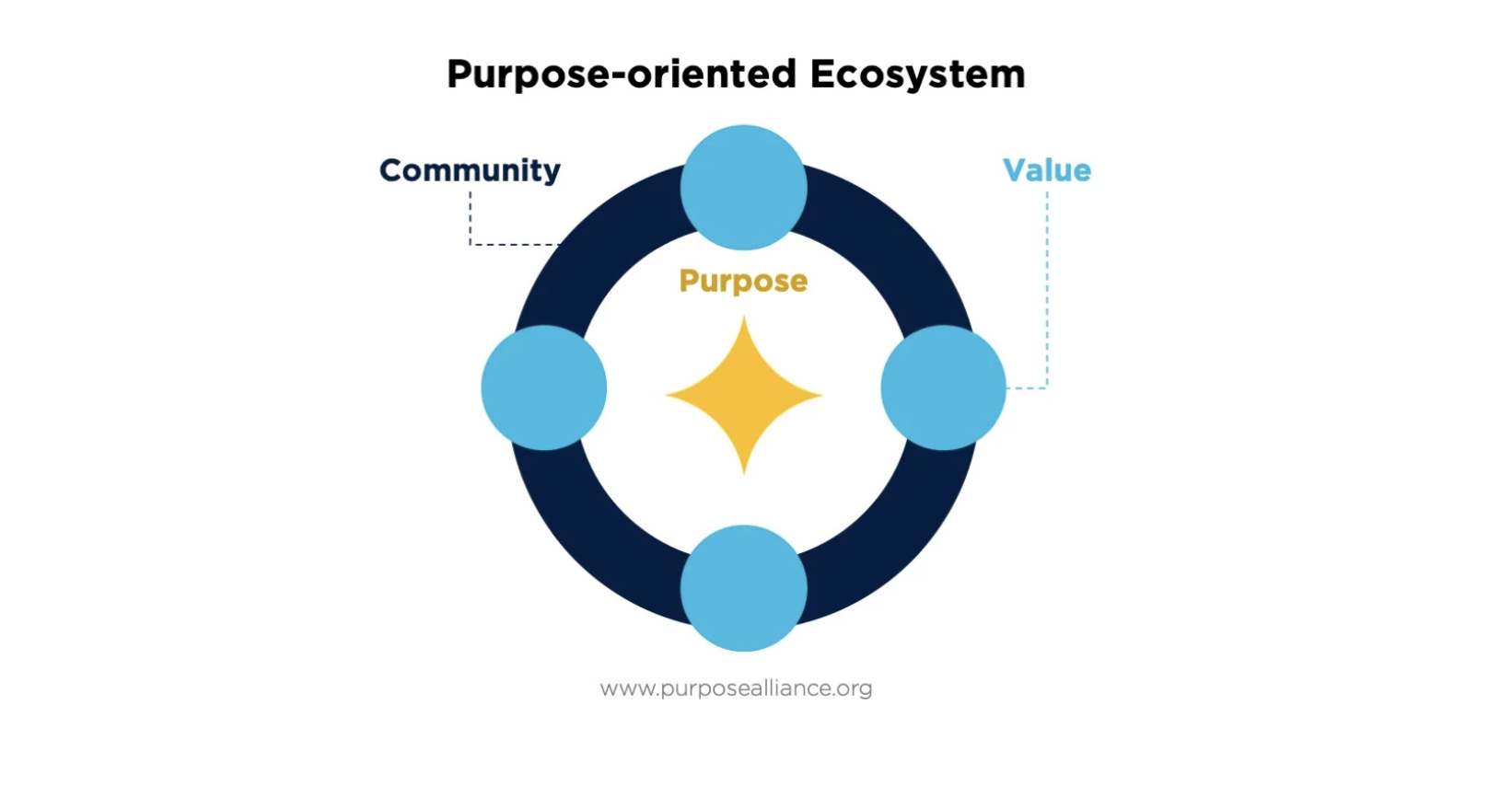Author: Francisco Palao
We have to dream and keep our feet on the ground at the same time. Nowadays, thanks to the democratized access to technology, we have possibilities that would have been unimaginable some years ago. At the same, there are all types of global challenges that not only need to be solved, but also represent important business opportunities. In this post I present an open methodology, called Purpose Launchpad, that enables entrepreneurs and all types of entities to build purpose-driven organizations to create a massive impact in the world.
We are in this world to create something that didn’t exist before we were born, this is the best way of leaving a footprint and reach immortality. There are no more excuses no to do it, we all have access to a series of technologies (Computer science, Internet, 3D printing, Drones, etc.) that allows us to create new products, services and companies which seemed science-fiction a few years back.
However, technology isn’t everything. We need to create something new that brings value to the world. To invent is to create something new, to innovate is to create something new that gets sold, either because there are clients willing to pay for it or users willing to invest their time in the product or service we have created.

As Steve Blank used to say: “no business plan survives first contact with customers”. What he meant was that, by definition, any idea that we may have is always a hypotheses (until it isn’t demonstrated that it really works) and, subsequently, instead of limiting ourselves to writing and executing a business plan, we need to evaluate our ideas with the market before building a product or service that could y fail.
Life is very short to spend months (or even years) building something that no one is going to use. This is why some years ago different innovation methodologies arose and allowed us to define WHAT should we build to generate real value. In this way, there are methodologies create like the one by Steve Blank called Customer Development (that tells us that, before building a product, we have to discover who is our real client and what does he/she need), Lean Startup (that, among other applications, helps us carry out experiments to develop our product with quick iterations and learn based on real data), Design Thinking (which helps us empathize with clients to find their needs and align what is technologically viable and the company’s strategy), and lots of other processes and innovation tools.
There’s no point in knowing what we should develop if we don’t build our product and/or service in the right way. This is why, at the beginning of the century, the Agile movement emerged and contributed to the right way of HOW to build software products in the most adaptable way to our changing surroundings and oriented in bringing value to the final user. In this way, many ways of working like Scrum and Kanban should be highlighted, which allow software developers to create products in the right way, and it has also been extended to other applications areas beyond software.
In fact, methodologies and process based on previous innovation methodologies and on agile principles have been created which help reduce the uncertainty when designing a product or service in only a couple of days (like the Design Sprint of Google) or how to transform a traditional company to an exponential organization oriented at an abundance-connected business model through the usage of the ExO Canvas (published in the book I wrote a few years ago called ‘Exponential Transformation’ with Salim Ismail).
Purpose Launchpad is an open meta-methodology which helps entrepreneurs and all types of entities to generate and/or evolve early-stage ideas into purpose-driven organizations to create a massive impact in the world. To this effect, Purpose Launchpad incorporates the most recognized innovation methodologies, processes and tools to build new products, services and organizations.

-
Purpose: The start for everything, which gives the right direction and meaning to our project.
-
People: Here we develop the internet team and connect with relevant communities to facilitate the development of our purpose and business, applying processes like Design Thinking and tools like the Empathy Map Canvas.
-
Customer: Here we incorporate techniques such as Customer Development to discover the type of customers we will serve and the needs they have.
-
Abundance: We apply different ExO attributes to properly connect and manage abundance in order to fit in today’s world and, eventually, become an Exponential Organization.
-
Viability: We ensure that we can develop a sustainable business model and, at the same time, define and implement the right funding approach.
-
Product: We need to develop products in an iterative way, starting with tools like Value Proposition Canvas and developing an MVP (Minimum Viable Product).
-
Metrics: There’s no point in taking action if we don’t measure and learn. We will implement different approaches like Innovation Accounting.
All the previous axes are connected to different types of methodologies and tools for its right development, but before start working on them, we need to know what’s the real status of development of all these axes in order to know what we should do at each stage of the project (exploration, evolution or impact). The Purpose Launchpad Assessment will allow us to evaluate the current status of our initiative answering 24 questions and offering a similar result to the one showed below.

-
Explore: At the very beginning, we don’t even know what we don’t know and we need to discover different posibilites for each of the key aspect of our initiative (who is our customer, what’s the product/service they need, who should compound the right team, what metrics we should measure, etc.). Here we will use several different type of methodologies, such as Design Thinking, to discover key insights from the real world.
-
Evaluate: Once we discover some potential paths to make our purpose true and our project successful, we start running different type of experiments to evaluate which of these paths is the best one to further develop. Here we will use several different types of methodologies, such as Customer Development, to keep evaluating our key hypotheses.
-
Impact: Once we validate our key hypotheses, have happy early adopters paying/using our product/service, we are properly connected to abundance, etc it’s time to start focusing on growing our initiative and manage the abundance to eventually make a massive impact.

Purpose Launchpad doesn’t only intend to develop new purpose-driven organizations but, more importantly, to help entrepreneurs, innovators and mentors to evolve their mindset to make a positive impact in the world.



![Grafica_ExOLaunchPad_Analisis-[Recuperado]24422](https://purposealliance.org/wp-content/uploads/2024/01/Grafica_ExOLaunchPad_Analisis-Recuperado24422.jpg)





